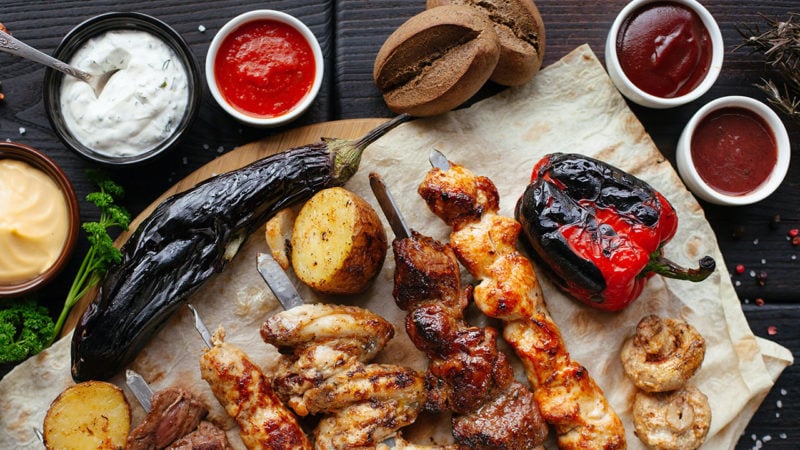Last Updated on August 16, 2021
There’s no better way to spice up your meat recipes than with a delicious, homemade hot sauce. Most people judge hot sauces by two categories—heat and flavor. While it’s easy for a sauce to achieve high marks in one category, the blend that combines a balance of both flavor and heat is often viewed as the Holy Grail.
This can get tricky because tolerances for heat and preferences for flavor are subjective. However, the best way to find that coveted balance is to make your own sauce. Use the following hot sauce recipes as is or as a starting point for your next dish.
Louisiana-Style Hot Sauce
When you think of a classic table hot sauce, you’re likely thinking of a Louisiana-style hot sauce, also referred to as a cayenne pepper hot sauce. It tends to be thin in texture and simple in its ingredients, featuring mostly vinegar, chiles, and salt. Because it’s so simple, it leaves lots of room for experimentation. You can experiment with the types of chiles and how you prepare them, be it fresh or fermented. Given the acidity of the vinegar base, this sauce pairs great with fatty proteins, like salmon, NY strip, or pork ribs.
Harissa
Harissa is a complex chile paste originally from Tunisia and found commonly throughout North African and Middle Eastern cuisine. While recipes vary from region to region, they typically combine chiles, garlic, olive oil, and spices to produce a spicy and slightly tangy paste. This paste works well with everything from chicken and veggies to a hearty beef stew. You can even blend it into homemade hummus to give the dip a kick.
Poblano Cream Sauce
This poblano-based sauce is less of a hot sauce and more of a side sauce, perfect for serving atop just about any Mexican cuisine. Poblano and serrano peppers, when roasted, give off a bold, flavorful heat and subtle smokiness that result in a nice balance of spice and flavor. Try this creamy, delectable sauce on pulled pork tacos, chicken enchiladas, or as a dipping sauce for veggies or chips.
Gochujang
A staple in Korean cooking, gochujang is a paste made with red chile peppers, glutinous rice, fermented soybeans, and salt. It brings rich complexity and heat together for a spicy-sweet flavor that you’ll want to add to everything. Traditionally, you’d ferment the ingredients outdoors for years to achieve the right amount of sweetness, but this five-minute gochujang recipe works well in a pinch. When it comes to using gochujang, a little goes a long way. Stir it into marinades, dressings, sauces, and soups. You can also add a dollop of it alongside beef bibimbap and other meat-centered noodle dishes, or use it as the base for a sauce to coat chicken wings.
Chile de Árbol Salsa
This chile de árbol salsa is a spicy version of a traditional salsa roja, which is found throughout Mexican cuisine. Chiles de árbol means “tree chilies” in Spanish. They are thin, red peppers known for both their spice and their flavor. When combined with guajillo chiles, tomatillos, garlic, and onion, they make for a thick, savory-spicy kicker. It’s perfect for grilled chicken thighs and beef fajitas.
Sambal Belacan
It’s impossible to think of Malaysian cuisine without mentioning sambal belacan. This red-chile-based condiment is a foundational ingredient in many traditional dishes and is simple in both its ingredients and preparation. Combine chiles with lime juice, salt, sugar, and belacan—a concentrated shrimp paste used frequently in Malaysian cooking—to produce a rich, bold, and spicy accouterment that pairs great with chicken, shrimp, and fish.



